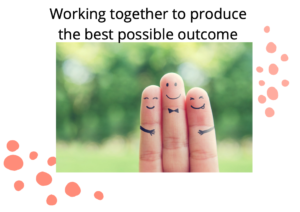The Society for Learning Analytics Research defined learning analytics as “the measurement, collection, analysis and reporting of data about learners and their contexts, for purposes of understanding and optimizing learning and the environments in which it occurs” (Long et al., 2011).
Using this definition as a framework, my first question is: who is responsible for measuring, collecting, analysing and reporting the data? As we can see in this week articles the answer is not easy, and there is a discussion about the role and responsibility of the educational institution, as well as the role of teachers and the external tech experts. Gašević et al article (2019) contextualise this idea that higher education is not adopting learning analytics as systematic as they should.
Adoption of learning analytics cannot be deemed as a simple fix to address the challenges of contemporary education. Rather, learning analytics must be considered in a broader context of interconnected organizational, social and political structures that form modern educational institutions. Effective adoption and impact of learning analytics can only be achieved if multidisciplinary teams responsible for and representative of all relevant stakeholder groups are formed and charged with implementation.
Gasevic et al. article (2019)
From the teacher perception, I have the feeling that there is no much control of capacity when we are talking about technology use to collect and analyze data. If we add this task to the list of teacher responsibility it seems that we are asking teachers to know about everything and do everything. In the other hand, if teachers are left behind in the decisions, they lose control of the situation, and learning analytics is presented as the solution to solve a variety of problems. Gasevic, et al. (2019) suggest stakeholders get involved from the start, I wonder where the ‘start’.
On the other hand, it can be argued that teachers or institutions are not responsible for this process, and developers are the ones taking control of their products. They are the ones how should adapt the product and make it appropriated for each content. Making sure, design and implementations are adjusting to the reality where research will be performed.
At the beginning of the course, I recall having some conversations in the formal forum where these elements were discussed. We talked about the responsibility and knowledge of the teacher and discussions about the real value of being in co-creation between developers and educators. Actually, I wrote that to one of my early posts: I wonder if this is because of lack of knowledge? Maybe because all the LMS are predetermined programmes that not allow enough customisation, companies don’t want educators to have this power? lack of resources? we should assume that teachers need to work closely with UX, designers and even developers in order to offer a good interface that can guarantee the needs of their students. Or do we prefer to pay software that is already designed and we scramble to use it in an efficient way?
In this post, I was referring to the design of the platform, thinking about the front end of the interface. But I think same questions apply when we are talking about the back end and data collection and analysis.
Talking about data, I would add, is Learning analytics simply enhancing something you would do in person? Is just making the process faster and more efficient? Or on the other hand, are offering a real opportunity to perceive and detect information that is beyond human interaction and observation? If that the case, are educators ready? Collaboration and having multidisciplinary teams where tech perspective is included seems quite obvious.
As I have done it before, I am going to use my background as a QA engineer working very closely with developers and basically being part of the tech team. Nowadays, Agile is the most used methodology in the tech business, sometimes it feels that Agile will solve all the problems that a team or business can have. Similar to the claims and benefits that Learning Analytics seems to bring…
An interesting element of Agile, that came to my mind having these conversations about the role of the institution, teachers and techy people, is the Three amigos agile perspective.

The implementation process needs to be seen as a task that requires multidisciplinary teams with active involvement from all relevant stakeholders, as also suggested in the literature (Tsai et al., 2018).
What is interesting about the Three amigos perspective is that the roles are well defined, they all work together in the whole project, but they have an important role during the process. I can relate the three characters with Institutions (Business – what is the problem we want to solve), development (building a possible solution) and teachers (testers – testing solutions and finding new possible cases that can happen). AS I said, even that each amigo has their specific role in the project, all three are involved in the whole process, end to end. That facilitates the description of the problem, the design and development of the solution and the implementation and testing. “It’s also good practice to review increments of the product that have been implemented to make sure it’s correct from those different perspectives.”